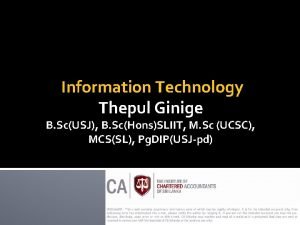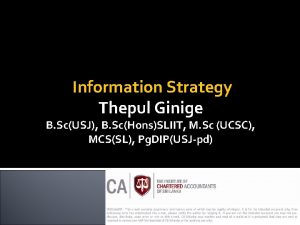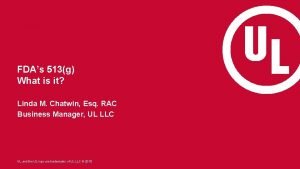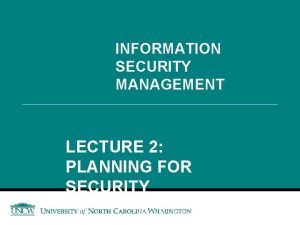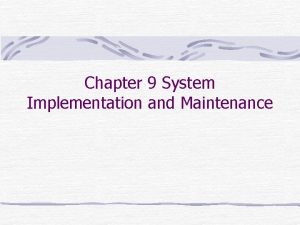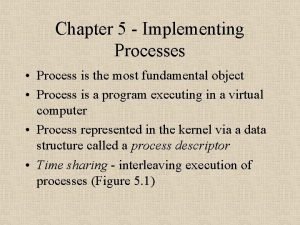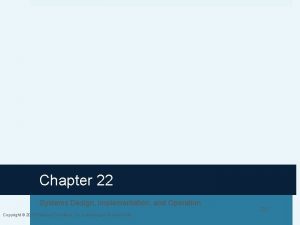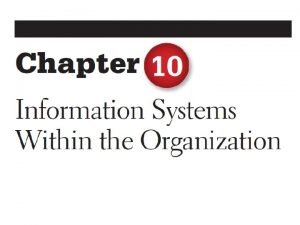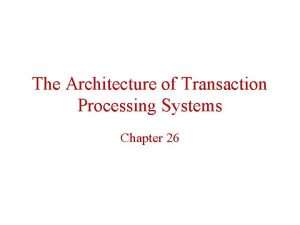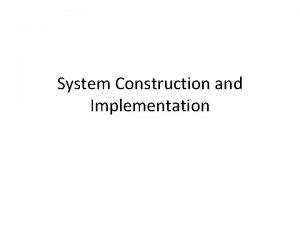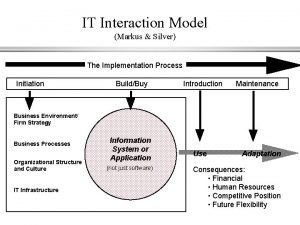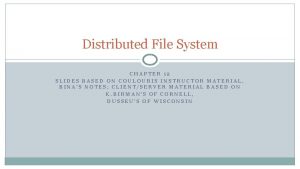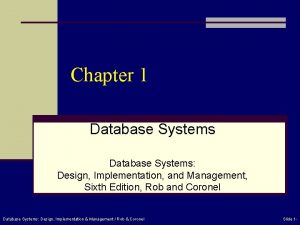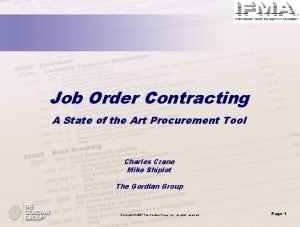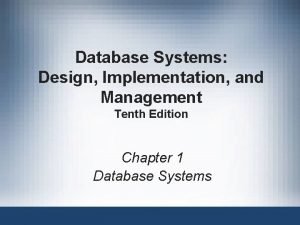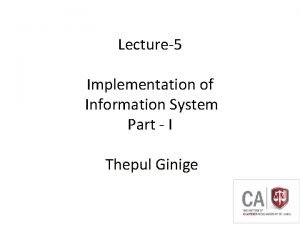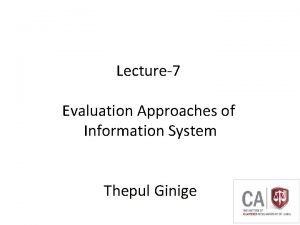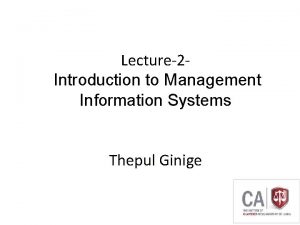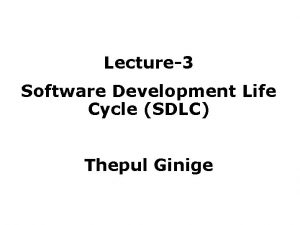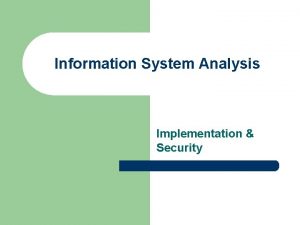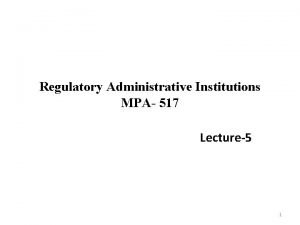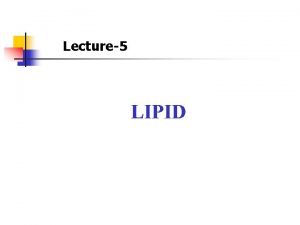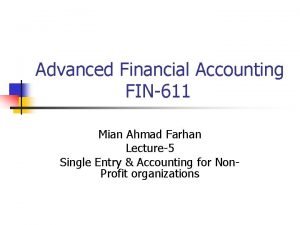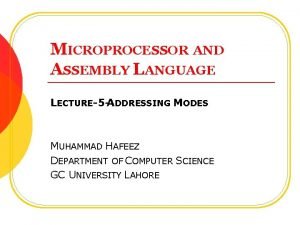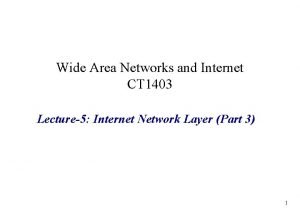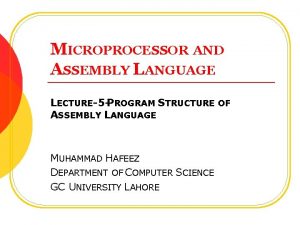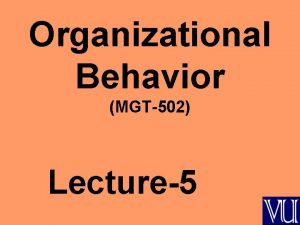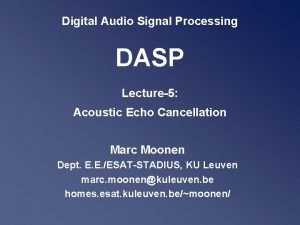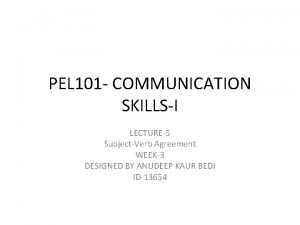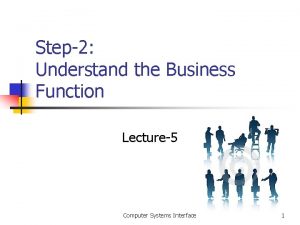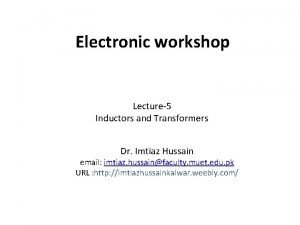Lecture5 Implementation of Information System Part II Thepul


























- Slides: 26

Lecture-5 Implementation of Information System Part - II Thepul Ginige

Major Topics • • • Security Privacy Guidelines Organizational metaphors Evaluation IS outsourcing Strategies 2

Security • Security considerations must be included when implementing a system • These include – Physical security – Logical security – Behavioral security 3

Physical Security • Physical security is controlling access to physical computer resources • Logical security is controlling software access • Behavioral security is building procedures to prevent persons from misusing computer hardware and software 4

Logical security • Logical security refers to the process of using software-based techniques for authenticating a user's privileges on a specific computer network or system. • The concept is a part of the more complete field of computer security, which involves both hardware and software methods for securing a terminal or network. 5

• When discussing logical security, one should consider the different techniques used, which include : – Usernames and Passwords – Token security – Two-way Authentication on a system. 6

Behavioral security • The underlying principle of behavioral security is that all operationally relevant threats and attacks can be discerned through visibility into network traffic behavior. • Infiltrated networks exhibit host-connection patterns that deviate from historical, or normal, connection patterns. 7

Web Security • Precautions used to protect the computer network from both internal and external Web security threats include – Virus protection software – Email filtering products – URL filtering products – Firewalls, gateways, and virtual private networks 8

Web Security • Precautions, continued – Intrusion detection products – Vulnerability management products – Security technologies such as secure socket layering for authentication – Encryption technologies – Public key infrastructure use and obtaining a digital certificate 9

Ecommerce Privacy Guidelines • Privacy is essential to ecommerce • Some privacy policy guidelines are – Start with a corporate policy on privacy – Only ask for information required to complete the transaction – Make it optional for customers to fill out personal information on the Web site • Further privacy policy guidelines are – Use sources that allow you to obtain anonymous information about classes of customers – Be ethical in data gathering 10

Evaluation Approaches • Several evaluation approaches can be used: – Cost-benefit analysis – Revised decision evaluation approach – User involvement evaluations – The information system utility approach 11

Information System Utility Evaluation • The information system utility framework is a way to evaluate a new system based on utilities of – Possession – Form – Place – Time – Actualization – Goal 12

Information System Utility Evaluation • Possession utility answers the question of who should receive output • Goal utility answers the why of information systems by asking whether the output has value in helping the organization achieve its objectives • Place utility answers the question of where information is distributed 13

Information System Utility Evaluation • Form utility answers the question of what kind of output is distributed to the decision maker • Time utility answers the question of when information is delivered • Actualization utility involves how the information is introduced and used by the decision maker 14

Web Site Evaluation • Corporate Web sites should be evaluated • The following is a list of key things to learn about the Web site visitors: – Know how often the Web site is visited – Learn details about specific pages on the site – Find out demographic and other information about Web site visitors 15

Web Site Evaluation • Web site evaluation, continued – Discover if visitors can properly fill out the Web forms – Find out who is referring Web site visitors to the client’s Web site – Determine what browsers visitors are using – Find out if the client’s Web site visitors are interested in advertising the Web site 16

Organizational Metaphors • Organizational metaphors may be used to assist in a successful implementation of a new system 17

Organizational Metaphors (and associated concepts) • • Machines Organisms Brains Cultures Political Systems Psychic Prisons Flux and Transformation Instruments of Domination 18

Interpreting Organizational Metaphors • Machines • Efficiency, waste, maintenance, order, clockwork, cogs in a wheel, programmes, inputs and outputs, standardisation, production, measurement and control, design • Organisms • Living systems, environmental conditions, adaptation, life cycles, recycling, needs, homeostasis, evolution, survival of the fittest, health, illness 19

Interpreting Organizational Metaphors • Brains • Learning, parallel information processing, distributed control, mindsets, intelligence, feedback, requisite variety, knowledge, networks • Cultures • Society, values, beliefs, laws, ideology, rituals, diversity, traditions, history, service, shared vision and mission, understanding, qualities, families 20

Interpreting Organizational Metaphors • Political Systems • Interests and rights, power, hidden agendas and back room deals, authority, alliances, party-line, censorship, gatekeepers, leaders, conflict management • Psychic Prisons • Conscious & unconscious processes, repression & regression, ego, denial, projection, coping & defence mechanisms, pain & pleasure principle, dysfunction, workaholis 21

Interpreting Organizational Metaphors • Flux and Transformation • Constant change, dynamic equilibrium, flow, self-organisation, systemic wisdom, attractors, chaos, complexity, butterfly effect, emergent properties, dialectics, paradox • Instruments of Domination • Alienation, repression, imposing values, compliance, charisma, maintenance of power, force, exploitation, divide and rule, discrimination, corporate interest 22

IS outsourcing • Outsourcing is an arrangement in which one company provides services for another company that could also be or usually have been provided in-house. Outsourcing is a trend that is becoming more common in information technology and other industries for services that have usually been regarded as intrinsic to managing a business. 23

• In some cases, the entire information management of a company is outsourced, including planning and business analysis as well as the installation, management, and servicing of the network and workstations. 24

IS outsourcing strategies • The key to a successful outsourcing strategy is to look both outside the organization – carefully considering the vendor you will partner with – as well as the dynamics inside your own organization, and how your outsourcing strategy impacts your own people. Human capital goals must be aligned with outsourcing goals. 25

• A careful planning and consideration will help ensure your outsourcing strategy is successful. – Manage internal engagement, morale, and motivation – Maintain or enhance the company culture – Manage the community response and reaction 26
 Thepul ginige
Thepul ginige Thepul ginige
Thepul ginige Thepul ginige
Thepul ginige Thepul ginige
Thepul ginige Fda 513g
Fda 513g Information security implementation
Information security implementation System maintenance must be performed to
System maintenance must be performed to Implementation of process in operating system
Implementation of process in operating system System design implementation and operation
System design implementation and operation Objective of transaction processing system
Objective of transaction processing system Transaction processing system architecture
Transaction processing system architecture System of construction
System of construction System development life cycle
System development life cycle Cse 132c
Cse 132c Rpc implementation in distributed system
Rpc implementation in distributed system System implementation process under it interaction model
System implementation process under it interaction model Distributed file system notes
Distributed file system notes Database system design implementation and management
Database system design implementation and management A model that is the demo implementation of the system.
A model that is the demo implementation of the system. State of the art contracting
State of the art contracting Database system design implementation and management
Database system design implementation and management Part part whole addition
Part part whole addition Part to part ratio definition
Part to part ratio definition Brainpop ratios
Brainpop ratios Define technical description
Define technical description Name the parts of a bar.
Name the parts of a bar. The part of a shadow surrounding the darkest part
The part of a shadow surrounding the darkest part

